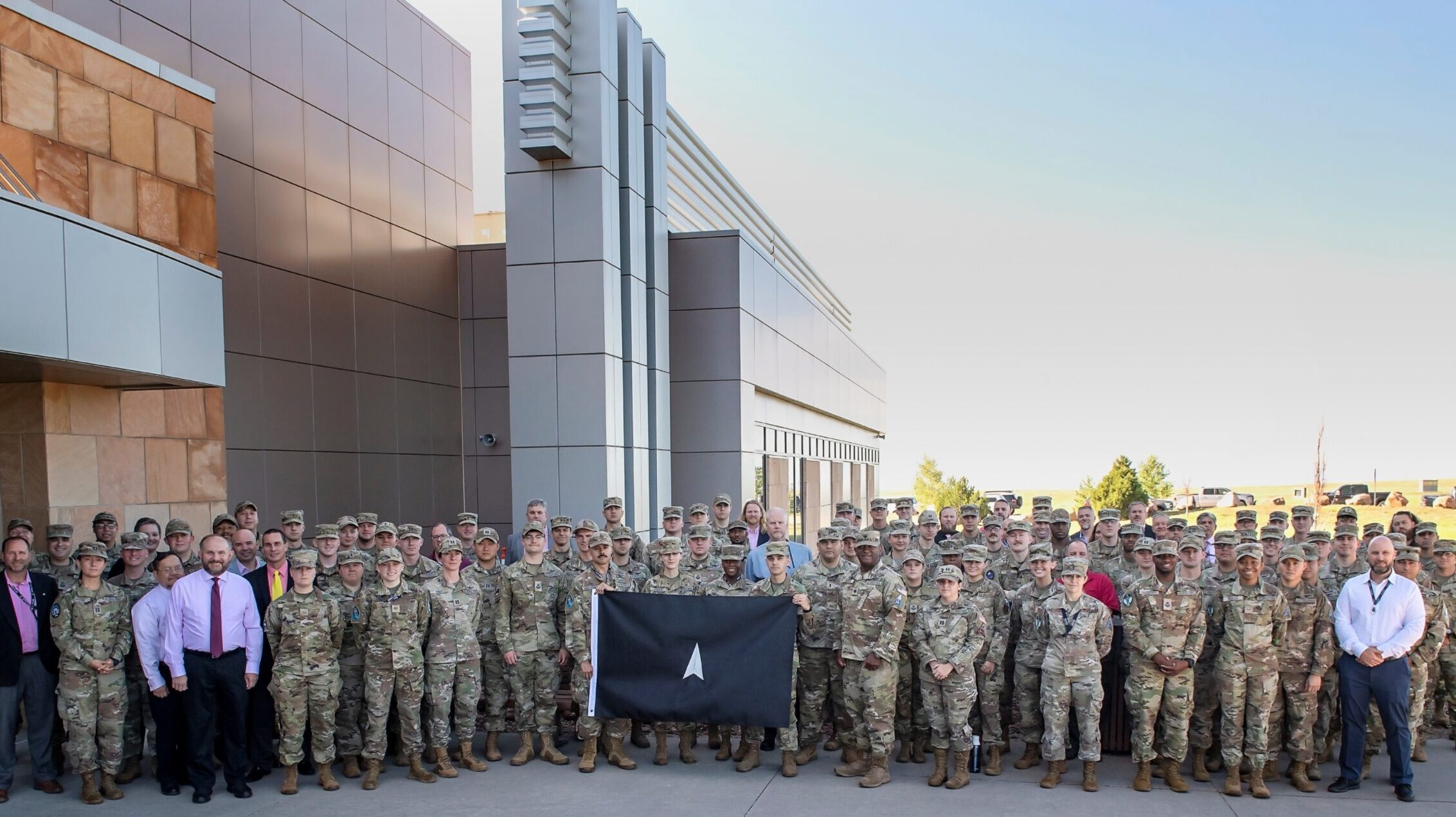
SPACE FLAG 22-3 participants pose for a group photo at Schriever Space Force Base, Colorado, Aug. 8, 2022. (U.S. Space Force photo by Judi Tomich)
AFA 2022 — The first of a new series of Space Force exercises aimed at training Guardians in specific skill sets is underway this week, called Black Skies and focused on electronic warfare — including “live fire” in the form of real-world satellite jamming, according to the head of the service’s training command.
“It’s an electronic warfare exercise that Guardians are participating in, particularly the Space Operations Command units,” Maj. Gen. Shawn Bratton, commander of Space Training and Readiness Command (STARCOM) told reporters here today.
The chromatic “Skies series” of exercises are modeled on the Air Force “Flag” exercises, and are more focused than the annual SPACE FLAG exercises that have been ongoing for many years. This year’s SPACE FLAG 22-3 was held Aug. 8-19 at Shriever SFB in Colorado, and was the first following the exercise’s accreditation as a joint training activity. It involved some 120 participants, including from the Air Force and the Army. The next iteration of Space Flag will be a coalition exercise involving allies among the “Five Eyes” intelligence-sharing group, Australia, Canada and the United Kingddom.
“There was a big Army presence there,” Bratton said.
The ongoing Black Skies exercise includes Guardians and Air National Guard units specializing in space, since the Defense Department has yet to come to a conclusion about the fate of those Guard personnel. Bratton explained that the exercises mixes both “live fire” and “constructive” training, including the use of a satellite “leased” from commercial companies to play the target.
He explained that the key area of EW training for Space Force personnel that is different from that required by Air Force trainees revolves around satellite jamming — a capability that many potential adversaries, including China and Russia, have in spades.
Black Skies will be followed later this year by the Red Skies exercise focused on “orbital warfare,” Bratton said. Next year, he added, the Blue Skies exercise will focus on cyber warfare.
STARCOM, which comprises about 1,000 personnel, is still operating out of its temporary headquarters in Colorado Springs, Bratton said, as the Department of the Air Force (which provides top-level civilian management of the Space Force) is in the midst of determining its permanent home.
However, he said that the year-old command has made progress in developing the architecture for the National Space Test and Training Complex (NSTTC), known in Guardian slang as “the range.” STARCOM has inherited some range real-estate from the former Air Force Space Command, but likely will involve activities at a number of different location given that much of the training will be digital, i.e. using computer modeling and simulation.
Beyond Black Skies, STARCOM is still working out whether it will also acquire any actual satellites to allow Guardians to undertake live operations training, Bratton said. He noted that he has tasked STARCOM’s Delta 1 to explore options with universities that operate CubeSats, as well as with the Air Force Academy with regards to their FalconSAT program.
The FalconSAT program allows cadets at the academy to design, build and fly a very small satellite. The latest iteration of the program, FalconSAT-8, equipped with five small test payloads, was carried to orbit in May 2020 aboard the X-37B space plane.
“We haven’t made any hard decisions or spend any money yet, but we’re considering: does it make sense for us to to partner with the academy and fly FalconSAT?” Bratton asked. “We could just build a ground station, because they already engineer that spacecraft and launch it. … We’re in planning, and trying to find the right way forward.”






















